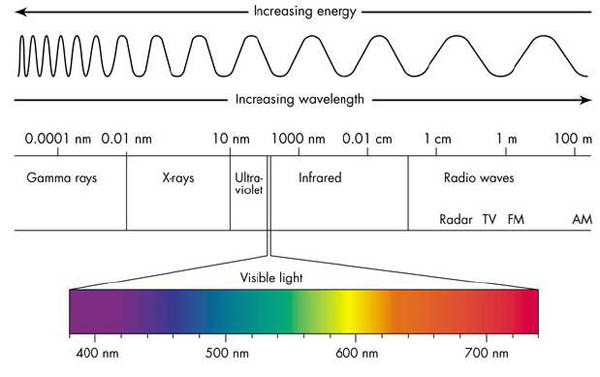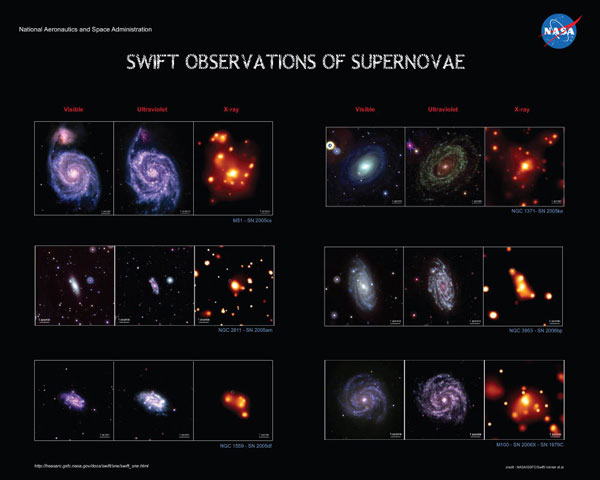
Things We Canít See
From Truther
When you think about it, there is a great deal out there that we can’t see.
Our eyes only respond to a very narrow range of electromagnetic radiation. The following diagram demonstrates just how narrow our range of vision compared to the overall electromagnetic spectrum.
(SCROLL DOWN)
*
*
*
*
*
*
*
*
*

So we can’t see anything that generates or reflects wavelengths equal to or longer than infrared, as the following image demonstrates. Even the Hubble Space Telescope can’t see the distant infrared galaxy that the Spitzer Space Telescope can see with its infrared sensors.

And we can’t see anything that generates or reflects wavelengths equal to or shorter than ultraviolet, as the following image from NASA demonstrates. Only instruments with special sensors that can detect ultraviolet or x-rays can see some of the objects in the sky.

Of course, we can’t see things that are smaller in size than about 40 microns, which includes germs and molecules.
We can’t see things that are camouflaged by technology, such as the Mercedes in the following picture.

Sometimes, it isn’t our eyes that can’t sense something that is right in front of us, but rather, our brain. We actually stare at our noses all day long but don’t notice because our brains effectively subtract it out from our perception, given that we don’t really need it. Our brains also fill in the imagery that is missing from the blind spot that we all have due to the optic nerve in our retinas.
In addition to these limitations of static perception, there are significant limitations to how we perceive motion. It actually does not take much in terms of speed to render something invisible to our perception.
Clearly, we can’t see something zip by as fast as a bullet, which might typically move at speeds of 700 mph or more. And yet, a plane moving at 700 mph is easy to see from a distance. Our limitations of motion perception are a function of the speed of the object and the size of the image that it casts upon your retina; e.g. for a given speed, the further away something is, the larger it has to be to register in our conscious perception. This is because our perception of reality refreshes no more than 13-15 times per second, or every 77 ms. So, if something is moving so fast that it passes by our frame of perception in less than 77 ms or so, or it is so small that it doesn’t make a significant impression in our conscious perception within that time period, we simply won’t be aware of its existence.
It makes one wonder what kinds of things may be in our presence, but moving too quickly to be observed. Some researchers have captured objects on high-speed cameras, for which there appears to be no natural explanation. For example, there is this strange object captured on official NBC video at an NFL football game in 2011: Whether these objects have mundane explanations or might be hints of something a little more exotic, one thing is for certain: our eye cannot capture them. They are effectively invisible to us, yet exist in our reality.
This article originally appeared at TheUniverseSolved.
